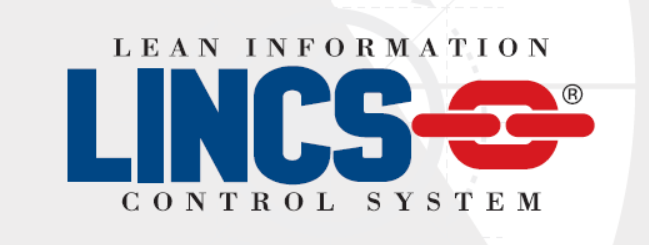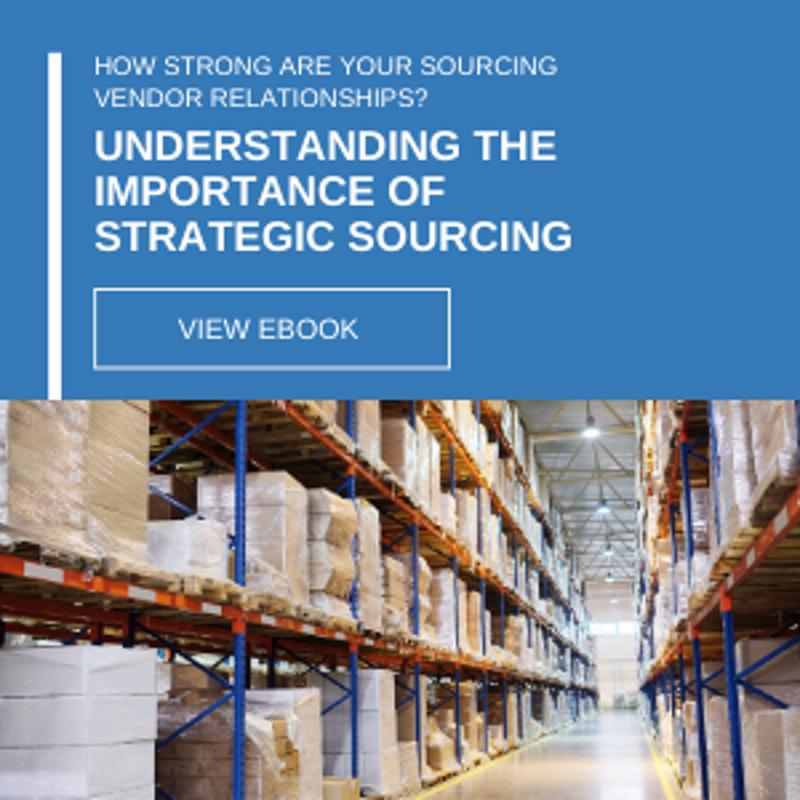-
Subscribe to Blog:
SEARCH THE BLOG
CATEGORIES
- Aerospace
- Asset Maintenance
- Automotive
- Blog
- Building Products
- Case Studies
- Chemical Processing
- Consulting
- Food & Beverage
- Forestry Products
- Hospitals & Healthcare
- Knowledge Transfer
- Lean Manufacturing
- Life Sciences
- Logistics
- Manufacturing
- Material Utilization
- Metals
- Mining
- News
- Office Politics
- Oil & Gas
- Plastics
- Private Equity
- Process Improvement
- Project Management
- Spend Management
- Supply Chain
- Uncategorized
- Utilities
- Whitepapers
BLOG ARCHIVES
- June 2025 (4)
- May 2025 (1)
- April 2025 (1)
- March 2025 (1)
- February 2025 (4)
- January 2025 (4)
- December 2024 (4)
- November 2024 (2)
- October 2024 (6)
- September 2024 (5)
- August 2024 (5)
- July 2024 (6)
- June 2024 (3)
- May 2024 (3)
- April 2024 (4)
- March 2024 (3)
- February 2024 (4)
- January 2024 (5)
- December 2023 (2)
- November 2023 (1)
- October 2023 (6)
- September 2023 (3)
- August 2023 (4)
- July 2023 (2)
- June 2023 (3)
- May 2023 (7)
- April 2023 (3)
- March 2023 (3)
- February 2023 (5)
- January 2023 (6)
- December 2022 (2)
- November 2022 (5)
- October 2022 (5)
- September 2022 (5)
- August 2022 (6)
- July 2022 (3)
- June 2022 (4)
- May 2022 (5)
- April 2022 (3)
- March 2022 (5)
- February 2022 (4)
- January 2022 (7)
- December 2021 (3)
- November 2021 (5)
- October 2021 (3)
- September 2021 (2)
- August 2021 (6)
- July 2021 (2)
- June 2021 (10)
- May 2021 (4)
- April 2021 (5)
- March 2021 (5)
- February 2021 (3)
- January 2021 (4)
- December 2020 (3)
- November 2020 (3)
- October 2020 (3)
- September 2020 (3)
- August 2020 (4)
- July 2020 (3)
- June 2020 (5)
- May 2020 (3)
- April 2020 (3)
- March 2020 (4)
- February 2020 (4)
- January 2020 (4)
- December 2019 (3)
- November 2019 (2)
- October 2019 (4)
- September 2019 (2)
- August 2019 (4)
- July 2019 (3)
- June 2019 (4)
- May 2019 (2)
- April 2019 (4)
- March 2019 (4)
- February 2019 (5)
- January 2019 (5)
- December 2018 (2)
- November 2018 (2)
- October 2018 (5)
- September 2018 (4)
- August 2018 (3)
- July 2018 (2)
- June 2018 (4)
- May 2018 (3)
- April 2018 (3)
- March 2018 (2)
- February 2018 (2)
- January 2018 (1)
- December 2017 (1)
- November 2017 (2)
- October 2017 (2)
- September 2017 (1)
- August 2017 (2)
- July 2017 (2)
- June 2017 (1)
- April 2017 (3)
- March 2017 (3)
- February 2017 (2)
- January 2017 (2)
- December 2016 (2)
- November 2016 (4)
- October 2016 (4)
- September 2016 (3)
- August 2016 (6)
- July 2016 (4)
- June 2016 (4)
- May 2016 (1)
- April 2016 (3)
- March 2016 (4)
- February 2016 (2)
- January 2016 (4)
- December 2015 (3)
- November 2015 (3)
- October 2015 (1)
- September 2015 (1)
- August 2015 (4)
- July 2015 (6)
- June 2015 (4)
- May 2015 (7)
- April 2015 (6)
- March 2015 (6)
- February 2015 (4)
- January 2015 (3)
CONNECT WITH US
Tag Archives: Resource Capacity Planning
With all the recent media attention about ChatGPT and other AI tools taking over our jobs (and our world), it’s easy to forget that technology — even AI — is a tool we can use to make our lives easier and our businesses more efficient.
At USCCG, we’ve been using software to help our clients harness and wrangle their data and transform it into usable insights in real time, and support their operational goals and aspirations.
The various software modules that make up our proprietary LINCS system, along with Microsoft’s Power BI, were designed to do just that. Here’s a look at the software we use to help you harness your data.

LINCS
A cornerstone of the work we do at USC Consulting Group, the Lean Information Control System (LINCS) gives supervisors, managers and execs the operating information they need, when and where they need it. LINCS offers state-of-the-art tools and software applications that facilitate fact-based decision making in real time from the shop floor to the boardroom.
LINCS includes modules for advanced planning, manufacturing and logistics, value-stream mapping, time-phased production scheduling, inventory analysis and more. These modules can be used in combination or alone, based on the needs of your business. That’s because of another of our cornerstones: no cookie-cutter solutions. You can pick and choose which modules and features are most useful for your particular needs.
LINCS is designed to be a sophisticated decision support tool kit that is adaptable, affordable, easy to use and easy to configure.
We’re fond of saying companies need to “manage by the numbers.” This is the way to do it.
Here’s a closer look at the modules.
Performance Analysis and Reporting
This module collects and analyzes operating and production information in real time. Seeing how the work is stacking up as it takes place gives operators and executives powerful information by which to make decisions, prioritize activities and pivot when things aren’t going according to plan. It allows management to view operations at a glance or drill down to examine specific areas of opportunity via an executive dashboard. And it’s easy to configure and use.
Key Features:
- Acts as middleware, interfacing with enterprise-level and SCADA-level systems, as well as human input
- Identifies and quantifies improvement opportunities in your operation
- Provides accurate tracking and analysis of important key performance indicators
- Includes analytical and statistical tools to highlight performance problems
- Produces easy-to-read graphics and reports that allow you to understand operational performance at any level in your organization
- Provides actionable information from which to launch improvement initiatives
- Prioritizes needed action, then tracks and quantifies improvement effort
- Runs on Microsoft Windows® technology for ease of use and compatibility with existing systems
- Produces reports online and in hard copy at each level of the organization
- Interfaces easily with existing systems; does not require expensive software or hardware upgrades
- Does not require extensive in-house IT maintenance
- Is highly scalable; can grow with your business
Flexsim
No modesty here — this is a really cool software program. It’s a 3D simulation of new processes or practices before you roll them out onto the shop floor. It’s an object-oriented simulation software for processes like manufacturing, material handling and workflow. It helps engineers, managers and decision makers visualize and test proposed operations, processes or systems in “cyberspace” before trying it out in real life. The goal, like everything we do here at USCCG, is to boost productivity, eliminate bottlenecks and ultimately enhance your profits.
Key Features:
- Windows-based
- Fully object-oriented with C++ integration
- Models created graphically using drag-and-drop
- Amazing 3D virtual reality using drag-and-drop
- Unsurpassed flexibility and power
- Cool factor: High!
Resource Capacity Planning
This invaluable tool gives you a realistic, real-time view of available versus required resources, including people, materials, tools and equipment. It helps you make sure you’re on track to achieve your production plan, each and every day and shift. It’s user friendly and can be customized for each client’s needs.
Key Features:
- Identifies equipment capacities required to meet projected demand
- Considers process maturity and operational learning curves when calculating resource requirements
- Performs long-range material requirements planning
- Adjusts for expected yield and scrap rates
- Provides rough cut (family-level) and detailed (product/line item-level) planning
- Summarizes labor hour requirements by skill set and work area
Microsoft Power BI
What good is the amount of data we have at our fingertips today if we can’t analyze it, interpret it and put it to use, right? That’s where Microsoft Power BI comes in. It creates news you can use. The program is designed to collect the various types of data generated within your business and coalesce it into useful, timely information by which you create actionable insights. It consists of a Power BI Desktop, an online software-as-a-service (SaaS), and mobile apps for Windows, Android and iOS devices. Together, those three components work to wrangle your data into insights you can share with your team.
Key Features:
- AI helps you create machine learning modules, accesses image recognition and more
- AI’s lightning-fast speed gives you actionable insights quickly
- Able to interface with the multiple data sources you may be using, like Salesforce
- Customizable, allowing users to create unique sets of information based on their needs
- Connects data on a dashboard that’s easily viewed and understood
- Includes Report Builder and Report Server features
By using the latest-and-greatest software out there, we help our clients enhance their operations, streamline their day-to-day, stay on top of inventory and create actionable decisions. It’s about managing by the numbers.
For more information about how this software technology can help streamline your operations, call us at 800-888-8872 or email us at info@usccg.com.
Nearly as soon as confirmed cases of coronavirus began growing in the U.S., abnormal became the new normal. Schools have shut down across the nation, employees who have never worked from home have begun working remotely full-time, and dine-in restaurants have transformed seemingly overnight into takeout eateries. At supermarkets, formerly pedestrian purchases like paper towels, toilet paper, canned goods and frozen vegetables have suddenly become hot ticket items. While some businesses have been able to roll with the punches fairly smoothly, the transition has been more challenging for others, resulting in furloughs, layoffs and significant delays to previously scheduled deliveries.
The suddenness of the pandemic has many business leaders in virtually every industry pausing to reflect their supply chain management: Do I have the systems in place to continue business operations now and in the future?
Supply chain management
Perhaps the biggest impact COVID-19 has had on businesses is within the supply chain. Indeed, according to the Institute for Supply Chain Management, approximately three-quarters of firms throughout the U.S. have felt some degree of supply chain disruption, from stoppages to shortages to delays. A poignant example is with PPE and protective supplies. There has been a shortage of hand sanitizer, face masks and latex gloves in both the retail segment and in healthcare facilities, ultimately affecting health care workers who need protective personal equipment to reduce the risk of infection while treating patients with COVID-19.
The federal government has helped to increase the supply of PPEs by invoking the Defense Production Act, which mandates certain high-capacity industries to pause what they’re doing and devote resources to producing life-saving products and equipment. But even prior to the White House taking these rare measures, many within the business community were already stepping up to the plate. As noted by Forbes, clothing manufacturers began mass producing medical masks and protective clothing. 3-D printing firms fabricated print protective visors and liquor brands swapped out glass bottles on production lines for the plastic kind, filling each with hand sanitizing solution.All business owners are to be commended for their selflessness, but in many cases, the precautions and fail-safes they’d previously arranged allowed them to avail themselves at a moment’s notice, without compromising their own abilities to maintain or increase productivity.
Ken Glasser, a global sourcing contracts manager at Axcelis Technologies, told Supply Chain Dive that dual sourcing has made supply chain disruptions easier to manage.
“We’ve been able to maintain a good flow of materials from our sources in China throughout the pandemic,” Glasser explained. “There have been some slight interruptions from time to time but generally, we are getting everything that we need to maintain our production schedules.”
Dual sourcing serves as a hedge against supply chain risk. Should one supplier be unable to provide a specific product or service, a second or third supplier can make up the difference.
Addressing constrained capacity
With “sold out” and “out of stock” signs becoming more common in convenient stores and super markets, the speed with which these fast-selling items reappear tends to vary. Toilet paper proved to be a popular item early on, with many shoppers buying in bulk. Weeks later, stores continue to sell out. Economists point to robust demand and lockdown orders as the prime reasons for constrained capacity, as some manufacturers are working with skeleton staffs or are offline completely.
Retailers have addressed this issue through numerous strategies. Some have restrictions that allow only so many rolls per purchase. Others have cut down on business hours so operators have more time to devote to restocking without having to compete with grab-and-go customers.
Although toilet paper predominantly comes from either virgin pulp trees or recycled pulp, the industry may look for alternative sources to avoid similar issues in the future. In a statement obtained by Vox from Georgia-Pacific, the Atlanta-based toilet paper supplier noted advanced resource capacity planning and optimizing existing work processes has allowed the company to increase its normal capacity by 20%.
Ongoing worker education
The stock market is proof positive as to the enormous impact the pandemic is having on the national economy; nearly every day that passes sees dramatic jumps and declines in the Dow Jones Industrial Average, climbing 900 points on one day, then plummeting over 1,500 points the next.
Employees are also experiencing tremendous instability. The economy lost over 700,000 jobs in March alone, and in a span of three weeks, more than 16 million people filed for unemployment benefits. Some economists speculate the jobless rate could top 15%.
Layoffs and furloughs have resulted from the sudden loss in demand in certain industries. As a result, organizations have ultimately had to improvise and do more with less. This has involved educating tenured staff to handle or learn skills as an accompaniment to their current workload. In some cases, crash course training sessions have been employed in response to the virus infecting existing staff, rendering them unable to be on site for fear of further spread of the disease.
“Workers’ ability to understand new workflows depends on ‘buy-in’ on the part of employers and employees.”
Workers’ ability to retain and understand new workflows is heavily dependent on “buy-in” on the part of both employers and employees. If staff has a genuine willingness to learn, and employers are clear about instructions, disruptions can be minimized.
These efforts and more can help businesses achieve resilience in the face of situational adversity. Peter Bolstorff, executive vice president for the Association for Supply Chain Management, told Supply Chain Dive that organizations’ ability to adapt and improvise in high pressure situations hinges on planning. Readiness entails truly understanding every aspect of the supply chain — in all its forms — to enhance visibility and transparency. Clarity allows decision makers to ameliorate certain pain points and weaknesses so they don’t become major problems.
If nothing else, the rolling impact of the last few months re-emphasizes the importance of expecting the unexpected. If you’re looking to improve existing processes to better plan for the future, USC Consulting Group can help. Whether it’s optimizing your supply chain, assisting with strategic sourcing or helping staff adjust to new working environments through ongoing education, USC Consulting Group is dedicated to empowering performance. Contact us to learn more.
The times they are a-changin.
If there was one song that could best describe the current state of the mining and metals industry, the 1964 classic sung by Bob Dylan sums it up. In just about every way you can imagine — consumer interests, technological innovation, regulatory scrutiny, automotive production, political developments — a variety of forces largely beyond producers’ control are causing businesses to re-examine how they operate.
In some respects, these influences have fueled the sector’s prosperity. For example, metals and mining remains a major contributor to the nation’s economy, adding an impressive $2.5 trillion per year, according to the most recent statistics from the National Mining Association. Additionally, it’s also one of the more high-paying professions, directly employing 419,000 Americans directly and 1.2 million indirectly.
Yet at the same time, many of the successes experienced by producers are raising the stakes for other companies so that they too can remain profitable and avoid being left behind. After all, metals and mining is a competitive, performance-based industry, where only those who truly thrive can survive. The best way of going about this comes from reading the tea leaves and making the proper investments to improve the ongoing supply chain and reduce cycle time.
Here are four forces catalyzing change in the mining and metals industry. Recognizing these influences and making the appropriate adjustments may be the difference between prosperity and insolvency:
1. Automation
For years, economists have described artificial intelligence as the wave of the future. In reality, it’s the here and now. Americans have a love-hate relationship with AI, as a recent poll from Gallup found 77% of adults believe the process improvements endemic to AI as mostly positive. Yet at the same time, close to 60% of respondents in a separate survey viewed it as a threat to people’s jobs.
Metals and mining is certainly no exception to AI’s influence. This industry is steeped in tradition, being one that traces back thousands of years. However, economic realities, employment conditions, and the supply and demand of mineral deposits have impelled producers to embrace AI to improve work processes and output. Many of the activities involved in extraction, for instance, are labor intensive and entail repetitive actions. Thanks to automation, however, some of the grueling work that used to be done by people is handled by robotics.
As referenced in a recent Reuters article, AI adoption has dramatically improved output, rising between 15% and 20% among some companies. If trends continue, the automation market is poised to reach a valuation of nearly $3.3 billion by 2023, according to estimates from Markets and Markets.
2. Natural resource depletion
The Earth is rich with minerals and thanks to enhanced technological capabilities, they’re more easily extractable and locatable. The U.S. is heavily invested in exploration, responsible for around 7% of such spending in 2016, based on estimates from the National Mining Association.
The problem? Other parts of the world are spending much more, including Canada, Australia and Latin America (accounting for the largest percentage at 28%). In fact, were it not for imports, the U.S. mining industry would be unable to contribute many of the metals used for fabrication purposes, such as in fighter jets or catalytic converters.
One of the leading natural resources that isn’t nearly as plentiful as it once was is gold. According to data compiled by Bloomberg, gold discoveries slipped 85% in the 10 years leading up to 2016, and gold reserves are down by double digits tracing back to 2011.
Reversing this trend won’t come easily, but by more fully embracing innovative extraction activities and more targeted utilization of public funds, producers may be able to more assiduously plumb uncharted tracts of land and compete with other countries upping the metals exploration ante.
 High demand for gold and depleted resources is forcing producers to strategize.
High demand for gold and depleted resources is forcing producers to strategize.
3. Ubiquity of mobile technology
If there is one thing that has taken the world by storm in recent years, smartphones may top them all. Everywhere you look, people are looking at their phones. Indeed, in the U.S., 81% of the public owns a smartphone, according to figures from the Pew Research Center. In other parts of the globe, ownership is substantially higher, including South Korea (95%), Israel (88%), and Sweden (86%).
The multifunctional element of smartphones wouldn’t be possible without actual elements. As the U.S. Geological Survey so aptly puts it, ordinary minerals give smartphones extraordinarily capabilities, utilizing a sweeping array of deposits that include bauxite, sphalerite and arsenopyrite.
It’s safe to assume that smart device ownership will continue to surge as technologies and consumer interest further develops. But since natural resources are inherently finite, producers must be constantly thinking a few steps ahead to make the most of the minerals available. For example, computer chips at one time were fabricated from primarily 12 minerals. Today, the number is closer to 60, according to the National Mining Association.
Producers must continue their research to further extract the potential available in mineral resources.
4. Resource capacity planning
In a global marketplace, where countries and companies vie for a smaller pie of natural resources available, miners must make capacity planning a central focus of their operations.
The decisions made in this regard are often determined by the realities on the ground. Take steel as an example, which is an alloy of primarily carbon and iron. According to S&P Global Ratings, worldwide steel capacity in terms of utilization is fairly low by today’s standards compared to previous years, operating at approximately 78%, based on the most recent figures available. However, the worldwide steel landscape could be fundamentally altered with the ArcelorMittal acquisition of Ilva, an Italy-based steel developer, which became official in November 2018. Combined, the companies represent a combined 50% market share in flat production for the whole of Europe.
Whether it’s the manufacturing of steel or obtaining the minerals needed to fabricate it, resource capacity planning in the current trade environment is a core component of day-to-day workflow that mining organizations must prioritize.
Change, by its very nature is difficult. Yet it’s life’s only constant and one that mining and metals must embrace to improve output and remain competitive in a global marketplace. USC Consulting Group can help you control the variables by assessing your work processes and charting out a plan for what’s next. We have a 98.2% satisfaction rating from our clients and are confident you’ll be pleased with what we have to offer. Please contact us today.









